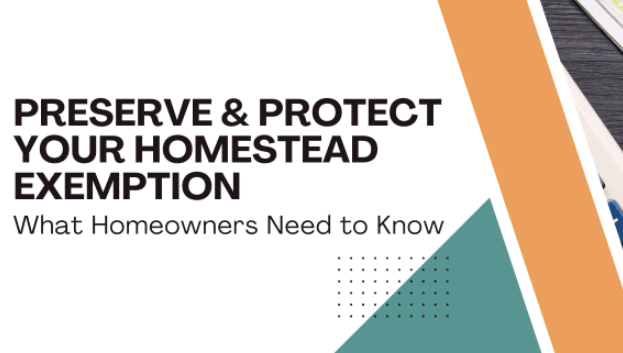By Roland Love, Independence Title Vice President and Attorney
If you own a home in Texas, your residential homestead exemption is one of the most important tools for reducing your property taxes. But did you know that exemptions aren’t automatic and require monitoring?
With Appraisal District Notices arriving soon, now is the perfect time to check your exemption status and ensure you maximize your savings.
How to Qualify for a Homestead Exemption
Texas Property Tax Code (TPTC) section 11.13 establishes the residential homestead exemption. Notably, the amount is currently $100,000 for school taxes (typically around 50% or more of the property tax total), and the amount of eligible acreage is up to 20 acres. An adult owner or a Qualifying Trust may claim the exemption, and the application may be filed at any time (once the deed is recorded). TPCT 11.42 (f). If it is mid-year and the preceding owner has already claimed the exemption, the County Appraisal District (CAD) will treat the exemption claim as filed on January 1 of the coming year. However, the owner should confirm by checking the Notice when received in the Spring.
Why Monitoring Matters
While the residential exemption continues (TPTC 43(c)) without the need for an annual filing, the 2023 Texas legislature added to section 11.43(h-1), requiring each chief tax appraiser to “review” each residential homestead exemption within a five-year period. This review is being phased in, but the review is often conducted as a letter inquiry. Many appraisal districts use a third-party service to flag probable improper homestead exemption, and the appraisal district will then send a letter of inquiry. The taxpayer may be asked to reapply if the flag was a very positive indicator of an improper exemption. In other instances, the taxpayer is requested to verify the residential homestead.
What to Do If You Receive a Letter
Regardless, if a taxpayer does not respond, the residential homestead exemption can be removed. While a taxpayer can reapply, it can be confusing to handle or be overlooked, and, in particular, if taxes are escrowed, there will be a lender and increased escrow to deal with and unwind. Again, the annual Appraisal District Notice should also be checked for exemptions, but an owner may also check the county appraisal district website for the residential homestead exemption. While all exemptions are typically not shown for privacy reasons, the “HS’ is usually shown for residential homesteads. If not, a call should be made to straighten it out. A new application may be required.
Stay on Top of Your Exemptions
Each homeowner is legally responsible for maintaining exemptions and notifying the CAD when an exemption is no longer applicable. It is also helpful to remind your new homeowners to claim the exemption if desired and continue to monitor its application. And be aware that many appraisal districts do not disclose all exemptions on the public website, so a phone call may be the best option.

 Facebook
Facebook
 X
X
 Pinterest
Pinterest
 Copy Link
Copy Link


